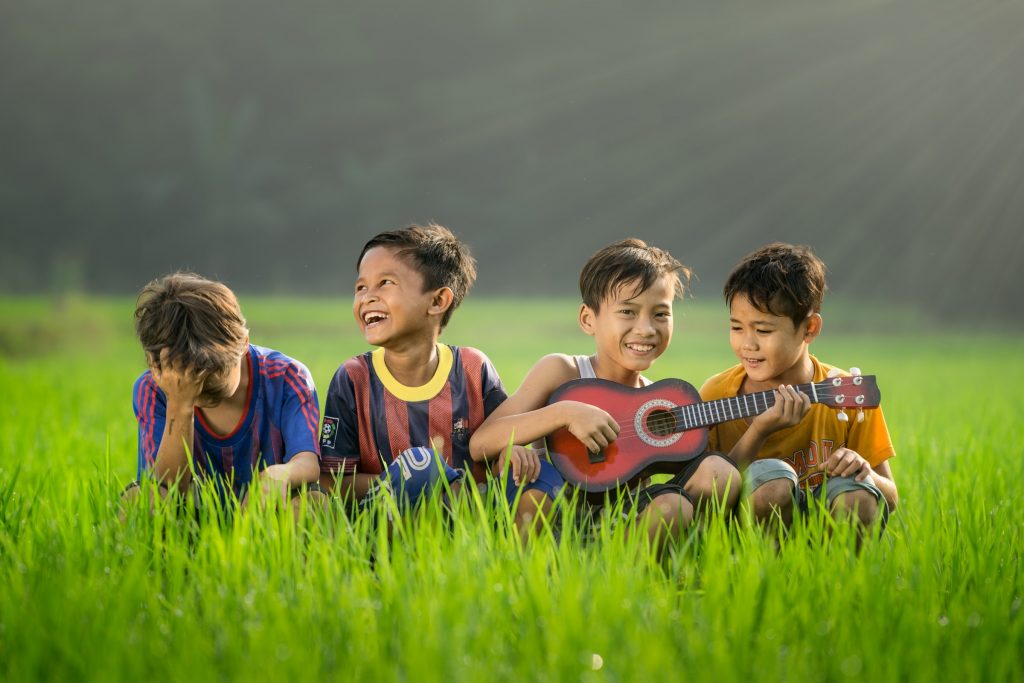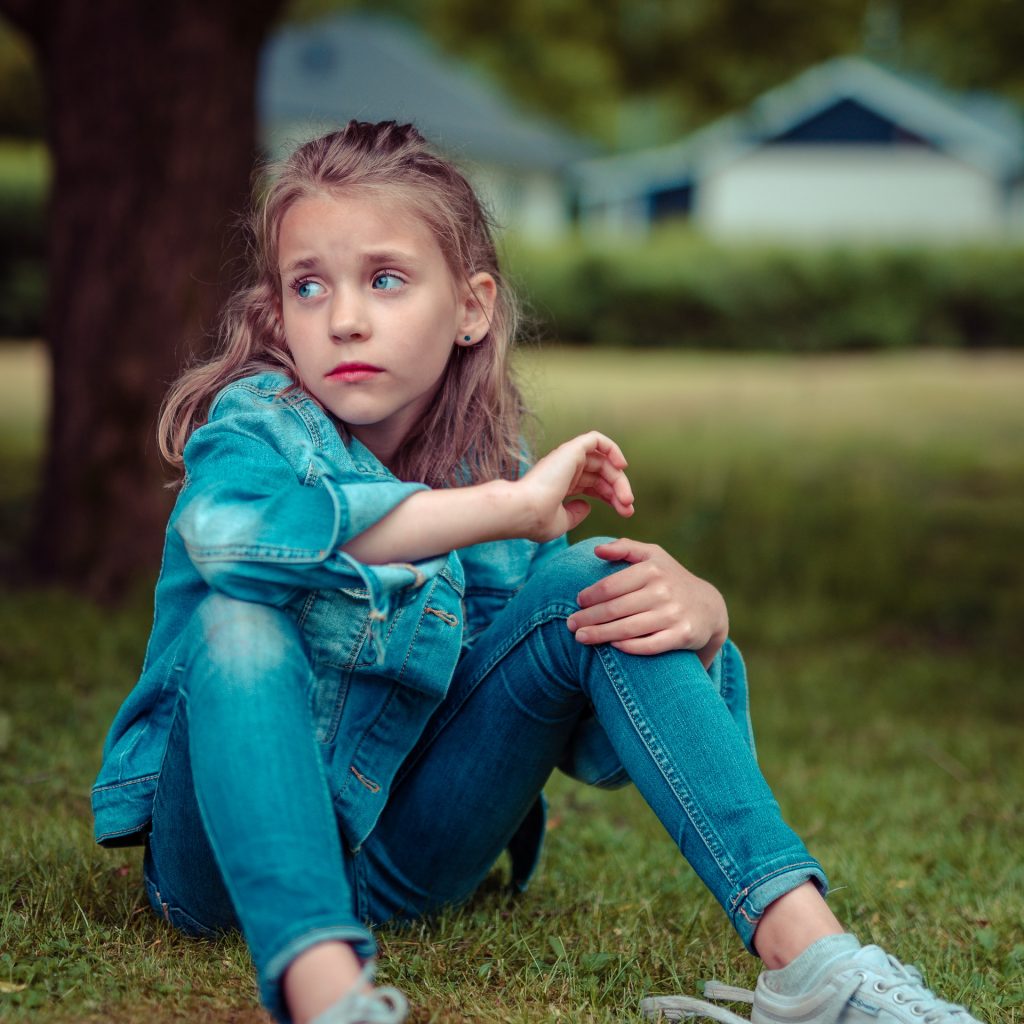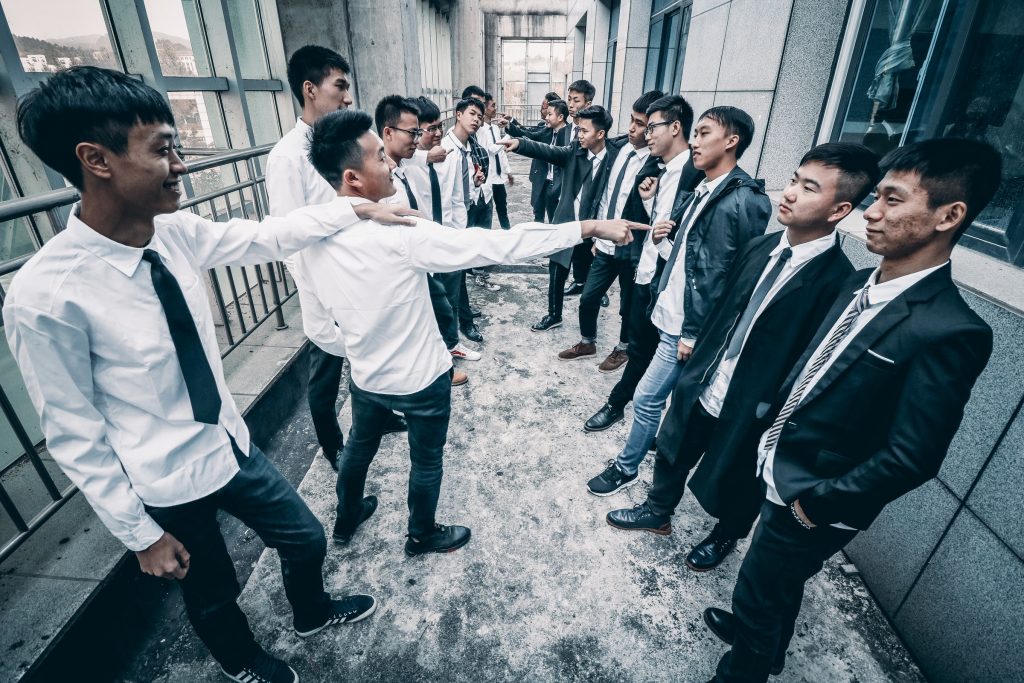83 Friends and Peers
Martha Lally; Suzanne Valentine-French; and Dinesh Ramoo
As toddlers, children may begin to show a preference for certain playmates (Ross and Lollis, 1989). However, peer interactions at this age often involve more parallel play rather than intentional social interactions (Pettit, Clawson, Dodge, and Bates, 1996). By age four, many children use the word “friend” when referring to certain children, and do so with a fair degree of stability (Hartup, 1983). However, among young children “friendship” is often based on proximity, such as they live next door, attend the same school, or it refers to whomever they just happen to be playing with at the time (Rubin, 1980).
Friendships take on new importance as judges of one’s worth, competence, and attractiveness in middle and late childhood. Friendships provide the opportunity for learning social skills, such as how to communicate with others and how to negotiate differences. Children get ideas from one another about how to perform certain tasks, how to gain popularity, what to wear or say, and how to act. This society of children marks a transition from a life focused on the family to a life concerned with peers. During middle and late childhood, peers increasingly play an important role. For example, peers play a key role in a child’s self-esteem at this age as any parent who has tried to console a rejected child will tell you. No matter how complimentary and encouraging the parent may be, being rejected by friends can only be remedied by renewed acceptance. Children’s conceptualization of what makes someone a “friend” changes from a more egocentric understanding to one based on mutual trust and commitment. Both Bigelow (1977) and Selman (1980) believe that these changes are linked to advances in cognitive development.

Bigelow and La Gaipa (1975) outline three stages to children’s conceptualization of friendship. In stage one, reward-cost, friendship focuses on mutual activities. Children in early, middle, and late childhood all emphasize similar interests as the main characteristics of a good friend. Stage two, normative expectation, focuses on conventional morality, that is, the emphasis is on a friend as someone who is kind and shares with you. Clark and Bittle (1992) found that fifth graders emphasized this in a friend more than third or eighth graders. In the final stage, empathy and understanding, friends are people who are loyal, committed to the relationship, and share intimate information. Clark and Bittle (1992) reported eighth graders emphasized this more in a friend. They also found that as early as fifth grade, girls were starting to include a sharing of secrets, and not betraying confidences as crucial to someone who is a friend.
Selman (1980) outlines five stages of friendship from early childhood through to adulthood. In stage 0, momentary physical interaction, a friend is someone who you are playing with at this point in time. Selman notes that this is typical of children between the ages of three and six. These early friendships are based more on circumstances (for example, a neighbour) than on genuine similarities. In stage 1, one-way assistance, a friend is someone who does nice things for you, such as saving you a seat on the school bus or sharing a toy. However, children in this stage do not always think about what they are contributing to the relationships. Nonetheless, having a friend is important and children will sometimes put up with a not so nice friend, just to have a friend. Children as young as five and as old as nine may be in this stage. In stage 2, fairweather cooperation, children are very concerned with fairness and reciprocity, and thus, a friend is someone returns a favour. In this stage, if a child does something nice for a friend there is an expectation that the friend will do something nice for them at the first available opportunity. When this fails to happen, a child may break off the friendship. Selman found that some children as young as seven and as old as twelve are in this stage. In stage 3, intimate and mutual sharing, typically between the ages of eight and fifteen, a friend is someone who you can tell things you would tell no one else. Children and teens in this stage no longer “keep score” and instead do things for a friend because they genuinely care for the person. If a friendship dissolves in this stage it is usually due to a violation of trust. However, children in this stage do expect their friend to share similar interests and viewpoints and may take it as a betrayal if a friend likes someone that they do not. In stage 4, autonomous interdependence, a friend is someone who accepts you and that you accept as they are. In this stage children, teens, and adults accept and even appreciate differences between themselves and their friends. They are also not as possessive, so they are less likely to feel threatened if their friends have other relationships or interests. Children are typically twelve or older in this stage.
Peer relationships: Sociometric assessment measures attraction between members of a group, such as a classroom of students. In sociometric research children are asked to mention the three children they like to play with the most, and those they do not like to play with. The number of times a child is nominated for each of the two categories (like, do not like) is tabulated. Popular children receive many votes in the “like” category, and very few in the “do not like” category. In contrast, rejected children receive more unfavourable votes, and few favourable ones. Controversial children are mentioned frequently in each category, with several children liking them and several children placing them in the do not like category. Neglected children are rarely mentioned in either category, and the average child has a few positive votes with very few negative ones (Asher and Hymel, 1981).

Most children want to be liked and accepted by their friends. Some popular children are nice and have good social skills. These popular-prosocial children tend to do well in school and are cooperative and friendly. Popular-antisocial children may gain popularity by acting tough or spreading rumours about others (Cillessen and Mayeux, 2004). Rejected children are sometimes excluded because they are rejected-withdrawn. These children are shy and withdrawn and are easy targets for bullies because they are unlikely to retaliate when belittled (Boulton, 1999). Other rejected children are rejected-aggressive and are ostracized because they are aggressive, loud, and confrontational. The aggressive-rejected children may be acting out of a feeling of insecurity. Unfortunately, their fear of rejection only leads to behaviour that brings further rejection from other children. Children who are not accepted are more likely to experience conflict, lack confidence, and have trouble adjusting (Klima and Repetti, 2008; Schwartz, Lansford, Dodge, Pettit, and Bates, 2014).
Bullying
According to stopbullying.gov (2016), a federal government website managed by the US Department of Health and Human Services, bullying is defined as unwanted, aggressive behaviour among school aged children that involves a real or perceived power imbalance. Further, the aggressive behaviour happens more than once or has the potential to be repeated. There are different types of bullying, including verbal bullying, which is saying or writing mean things, teasing, name-calling, taunting, threatening, or making inappropriate sexual comments. Social bullying, also referred to as relational bullying, involves spreading rumours, purposefully excluding someone from a group, or embarrassing someone on purpose. Physical bullying involves hurting a person’s body or possessions.
A more recent form of bullying is cyberbullying, which involves electronic technology. Examples of cyberbullying include sending mean text messages or emails, creating fake profiles, and posting embarrassing pictures, videos or rumours on social-networking sites. Children who experience cyberbullying have a harder time getting away from the behaviour because it can occur any time of day and without being in the presence of others. Additional concerns of cyberbullying include that messages and images can be posted anonymously, distributed quickly, and be difficult to trace or delete. Children who are cyberbullied are more likely to experience in-person bullying, be unwilling to attend school, receive poor grades, use alcohol and drugs, skip school, have lower self-esteem, and have more health problems (stopbullying.gov, 2016).
The National Center for Education Statistics and Bureau of Justice statistics indicate that in 2010–2011, 28 percent of students in grades six to twelve experienced bullying and 7 percent experienced cyberbullying. The 2013 Youth Risk Behavior Surveillance System, which monitors six types of health risk behaviours, indicate that 20 percent of students in grades nine to twelve experienced bullying and 15 percent experienced cyberbullying (stopbullying.gov, 2016).

Those at risk for bullying: Bullying can happen to anyone, but some students are at an increased risk for being bullied, including lesbian, gay, bisexual, transgendered (LGBT) youth, those with disabilities, and those who are socially isolated. Additionally, those who are perceived as different, weak, less popular, overweight, or having low self-esteem have a higher likelihood of being bullied.
Those who are more likely to bully: Bullies are often thought of as having low self-esteem and bully others to feel better about themselves. Although this can occur, many bullies in fact have high levels of self-esteem. They possess considerable popularity and social power and have well-connected peer relationships. They do not lack self-esteem, and instead lack empathy for others. They like to dominate or be in charge of others.
Bullied children often do not ask for help: Unfortunately, most children do not let adults know that they are being bullied. Some fear retaliation from the bully, while others are too embarrassed to ask for help. Those who are socially isolated may not know who to ask for help or believe that no one would care or assist them if they did ask for assistance. Consequently, it is important for parents and teachers to know the warning signs that may indicate a child is being bullied. These include: unexplainable injuries, lost or destroyed possessions, changes in eating or sleeping patterns, declining school grades, not wanting to go to school, loss of friends, decreased self-esteem, and self-destructive behaviours.
Media Attributions
- Figure 5.21: Friendships in young children. © Robert Collins is licensed under a Public Domain license
- Figure 5.22: Some children are more popular than others. © Janko Ferlič is licensed under a Public Domain license
- Figure 5.23: Some students are at an increased risk for being bullied. © Jerry Zhang is licensed under a Public Domain license

